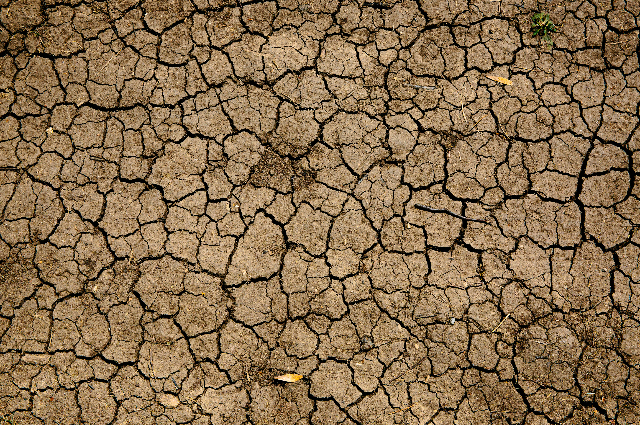
The world is grappling with a climate emergency of unprecedented severity as rising temperatures and increasingly extreme weather events destabilize ecosystems, economies, and communities around the world. Flooding is becoming both more intense and predictable in coastal areas, while agricultural sectors fight to cope with erratic weather patterns and degrading soil quality. Dealing with these urgent challenges requires an integrated, three-pronged strategy that includes sustainable development, technological breakthroughs, and fair resource use.
The transition from conventional energy generation using fossil fuels to cleaner, renewable energy sources is a key part of managing global warming. Now, the Science-Based Targets Initiative (SBTi) has developed a blueprint for how companies can transition from a reliance on fossil fuels to renewable Until the Paris Agreement, the SBTi, a collaboration of several organizations working with the UN Global Compact, CDP, WRI, and WWFa, partnered to help companies set and achieve SBTs. It has made moves to further investment in solar, wind, and hydropower technologies in order to create economic incentives around cuts to greenhouse gases as well as the search for alternative cleaner energy solutions.
If this sounds like an unworkable action, prepare for the next step: Sustainable Development and Equitable Resource Distribution
As Mahatma Gandhi well put it, Earth provides enough to satisfy every man's need, but not every man's greed. There isn't a whole lot of wisdom here, just a reminder of why we need to make a leap to sustainable development models of resource distribution. If we adopt rigorous use of clean technologies and manage with an eye toward equity and justice, we will even find our development processes complementing the processes of nature. This approach is good not only to protect the environment but also to fulfill the promise of offering the benefits of advancement with fairness to all.
Agriculture also has the opportunity to harness innovations around its technologies that can help further prevent further emissions of greenhouse gases. For instance, Fruitspec uses hyperspectral imaging to detect the ripeness of fruits without physical contact, ensuring that consumers receive produce in optimal condition and reducing the need for transportation and refrigeration that contribute to emissions. Such advancements are essential for creating a more sustainable agricultural sector.
To combat climate change effectively, it is imperative to transform the transportation sector. Implementing Zero Emission Vehicle (ZEV) mandates can incentivize automakers to produce and sell electric and hydrogen-cell vehicles. These mandates work similarly to carbon credits, offering tax breaks and regulatory credits to companies that meet certain clean vehicle sales targets. This shift to zero-emission transportation will significantly cut down on air pollution and greenhouse gas emissions.
Coastal ecosystems like mangroves, seagrasses, and salt marshes play a vital role in capturing and storing carbon dioxide from the atmosphere. The Blue Carbon Initiative focuses on the conservation and restoration of these ecosystems, helping to mitigate climate change while protecting biodiversity and supporting local communities. Preserving these natural carbon sinks is essential for reducing the overall carbon footprint.
Cities worldwide must adopt innovative water management strategies to cope with increasing urban flooding due to climate change. The Sponge Cities initiative employs permeable pavements, green roofs, and advanced stormwater drainage systems to absorb excess water and mitigate flood risks. Such urban planning solutions enhance resilience and protect human lives and property in vulnerable areas.
Reforestation efforts like the Great Green Wall of Africa aim to combat desertification and create employment opportunities through large-scale tree planting along the southern Saharan borders. This project not only helps restore degraded lands but also contributes to reducing global emissions by increasing carbon sequestration.
Early warning systems are critical to protecting vulnerable populations from the impacts of extreme weather events. The Climate Risk and Early Warning Systems (CREWS) program provides sustainable regional support to develop early-warning systems for cyclones and other climate-related disasters in underdeveloped regions. These systems enable timely evacuation and disaster preparedness, saving lives and reducing economic losses.
The rise of plant diseases and pests due to climate change poses a significant threat to global food security. Programs like the Africa-Korea AgTech Innovation Challenge (AKAIC) identify disruptive agricultural technologies (DATs) to enhance nutritional security and combat these emerging challenges. Such initiatives are crucial for building resilient agricultural systems that can withstand the impacts of climate change.
As climate change forces more people to flee their homes, it is essential to provide adequate protection and support for climate refugees. Specialized programs like the Displacement Tracking Matrix (DTM) for climate refugees collect data on refugee movements and needs, informing assistance efforts and ensuring that these populations receive the help they need. Capacity-building activities and legal protections are vital for addressing the growing crisis of climate-induced displacement.
The global climate crisis requires urgent and coordinated action across multiple sectors. By transitioning to renewable energy, adopting sustainable development practices, leveraging technological innovations, and protecting vulnerable ecosystems and communities, we can mitigate the impacts of climate change and build a more sustainable future. The solutions outlined above provide a roadmap for collective action, demonstrating that with the right policies and initiatives, we can rise to meet this unprecedented challenge.
. . .
References:
- NASA, 2021
- WHO, 2021
- UN, 2021
- NOAA, 2021
- FAO, 2021
- World Bank, 2021
- SBTi, 2021
- UNFCCC, 2015
- EIA, 2021
- SDGs, 2015
- Fruitspec, 2021
- TransportPolicy.net, 2021
- DOE, 2021
- Blue Carbon Initiative, 2021
- IUCN, 2021
- NOAA, 2021
- WEF, 2018
- Great Green Wall, 2021
- UNCCD, 2021
- CREWS, 2021
- UNDRR, 2021
- IOM, 2021
- UNHCR, 2021
